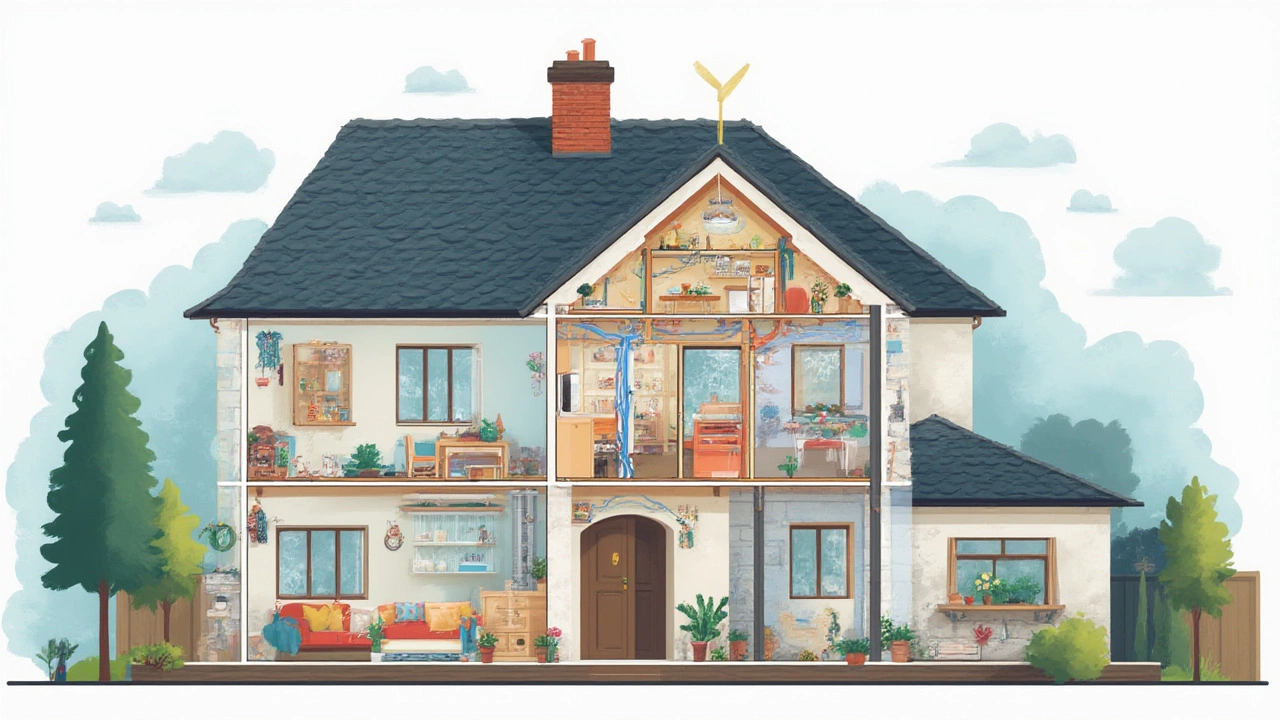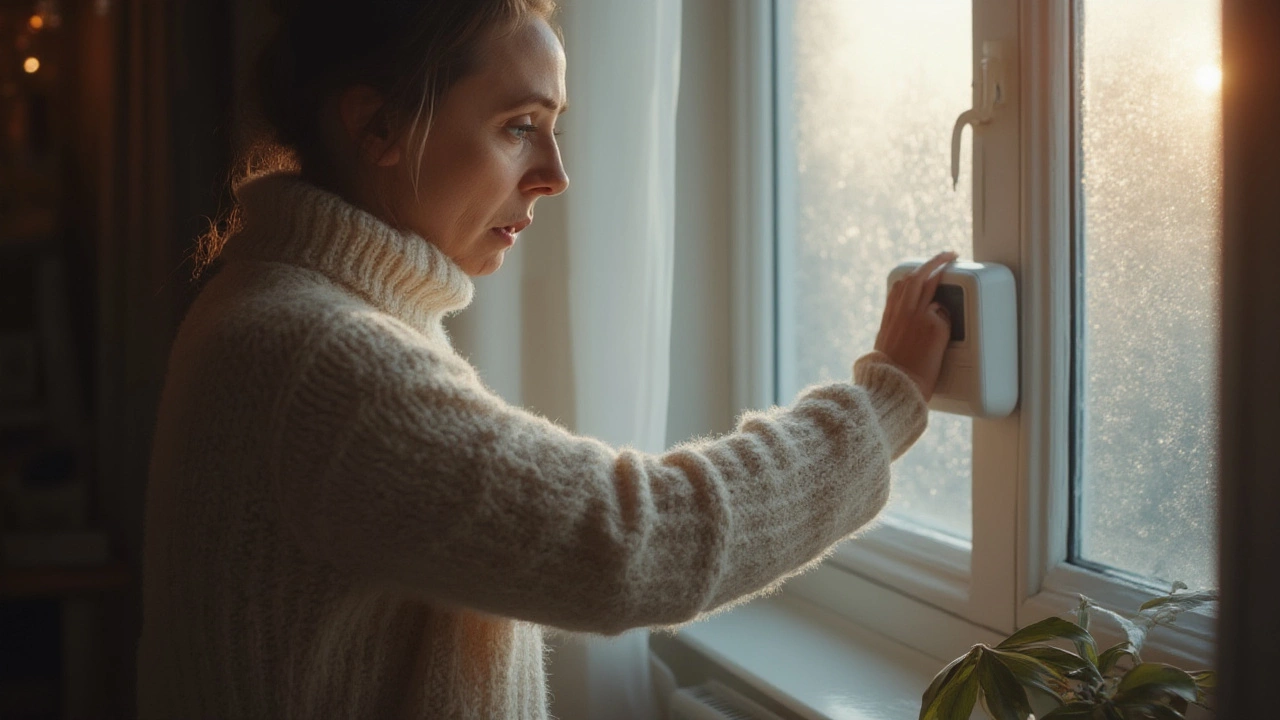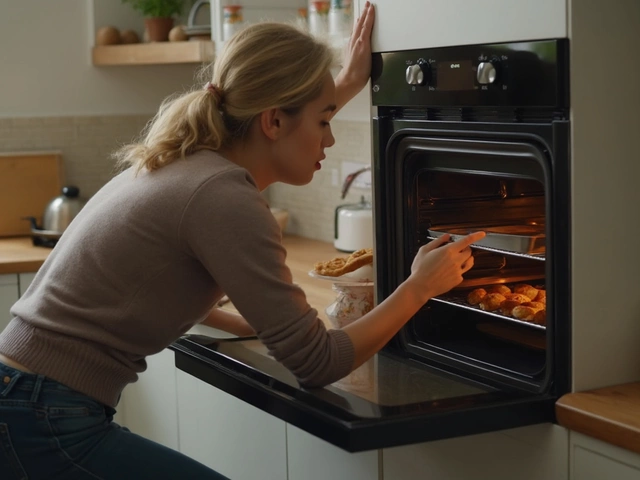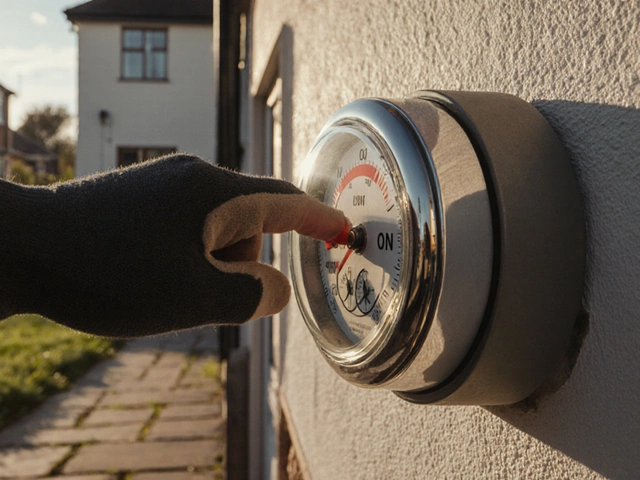Imagine walking into your home on a day when the thermostat says it’s 68, but you swear it feels like a chilly, damp 60 in your living room. Maybe the system’s humming, maybe it’s dead quiet, but either way, something’s wrong—and you know your energy bills are creeping higher. That’s enough to ruin anyone’s mood, but the real frustration starts when you have no clue what’s causing it. So, how do you know if your heat pump is actually the culprit? Let’s break it down so you don’t end up shivering—or sweating—in confusion.
Clear Signs Your Heat Pump Is Malfunctioning
Heat pumps are great... until they aren’t. When things go south, the red flags aren’t always obvious, and sometimes what looks like a minor hiccup can snowball into a price-gouging disaster. So, let’s put the magnifying glass on what you should watch for.
First, temperature trouble. If your heat pump is struggling to keep the house at the right temperature—heating or cooling—it’s trying to tell you something is up. You set it for cool in July, but the air feels lukewarm, or, in January, it just can’t beat the chill. That’s a classic signal. Many people keep bumping the thermostat up or down, figuring that’ll do the trick. But if you’re finding yourself doing that regularly, your unit is probably working overtime and not hitting the mark. According to an ENERGY STAR report, homes with malfunctioning HVAC units can see energy bills spike by up to 20% without any noticeable boost in comfort.
Next, listen up. Odd noises are a dead giveaway. We’re not talking about the gentle whoosh of air you hear from a healthy system. It’s the clanking, grinding, rattling, or screeching kind of noise—the kind that makes guests raise an eyebrow. Loud buzzing or clicking can mean anything from a loose part to a failing compressor. When was the last time you really listened to your HVAC system?
Take a walk outside while your heat pump’s running. If it’s shut off every few minutes—starting up, shutting down, repeating like a toddler on a sugar rush—that’s short cycling. Not only does this wear out the parts, but according to the Department of Energy, it can cut system life by several years. Short cycling is bad for efficiency and can completely undermine what a heat pump is meant to do: save you money.
Got frozen coils? It’s not just a winter problem. Even in summer, evaporator or condenser coils can ice over if there’s airflow trouble. If you spot ice on the outdoor unit, your heat pump is either low on refrigerant or starved for airflow. Both can damage the system fast.
Another sign: weird smells. Musty, moldy, or burning odors should set off mental alarms. Sometimes, it’s just dust burning off at the season’s start. But if the smell sticks around, or gets worse, a deeper problem could be brewing—like mold in the ducts or an electrical component getting fried. These are the moments to shut things down and call a pro, because you don’t want an electrical fire on your hands.
Check your energy bill. Is it climbing for no good reason even though your daily habits haven’t changed? The culprit could be your heat pump’s malfunction causing it to run longer, work harder, and eat up power.
One quick way to spot trouble is by testing airflow. Put your hand up to a vent while the unit’s running. Barely any air coming out? Worse, if it’s warm air on “cool” setting, or cool air on “heat” mode, your heat pump is failing to deliver.
Before calling in the cavalry, look at your system’s age. If it’s more than 10 years old, breakdowns become more common, and replacement starts making more sense. Statistically, most heat pumps last about 12–15 years with regular maintenance. If yours is in that age range, be extra vigilant for all these signs.
Table: Typical Signs and Their Possible Causes
| Warning Sign | Possible Cause |
|---|---|
| Not reaching set temperature | Low refrigerant, dirty filter, failing compressor |
| Ice on the coils | Low airflow, refrigerant problem, dirty coils |
| Noisy operation | Loose parts, motor failure, bad bearings |
| Short cycling | Improper thermostat setting, sizing issues, electrical trouble |
| Spiking energy bills | Reduced efficiency, leaks, system strain |
| Unpleasant smells | Mold, electrical failure, burnt wiring |
Common Issues That Cause Heat Pump Failure
Let’s get real about what turns a healthy heat pump into a glorified box of parts. Common issues don’t always need a PhD in HVAC to spot, but the tricky part is knowing which problems are harmless quirks and which ones spell “trouble.”
Dirty filters are the silent killer of efficiency. When the filter is gunked up, airflow drops, and the system strains to do its job. This can snowball into bigger failures, like frozen coils or even compressor burnout. The fix: check and replace air filters every 1–3 months—no excuses.
Refrigerant leaks are sneaky but serious. If your heat pump isn’t cooling or heating right, and especially if there’s hissing or ice, low refrigerant might be to blame. Leaks don’t just rob performance; they can wreck the compressor, which is usually the most expensive part to replace. Most leaks result from aging pipes or corroded connections. According to the EPA, even a minor refrigerant leak can cut efficiency by over 30% and is bad news for the environment.
Outdoor unit blocked? Leaves, grass clippings, or snowfall can choke the airflow and slow things down. Clear at least two feet of space all the way around the outdoor unit and keep it free of debris. If you see that the fan is struggling or making grinding noises, inspect for obstructions before panicking.
Thermostat trouble trips up a lot of homeowners. If the system isn’t responding to changes or seems to have a mind of its own, either the thermostat is malfunctioning or the wiring is faulty. Sometimes, it’s as simple as dead batteries. If you’re using a programmable or smart thermostat, double-check your settings before assuming the unit’s shot.
Electrical failures are less common but can be dramatic. Blown fuses, tripped breakers, or fried wires can make the whole system go silent. If you feel comfortable checking your breaker box, look for a tripped switch labeled “HVAC” or “heat pump.” Otherwise, it’s best to let a technician handle anything with exposed wires.
Let’s talk sensors. Heat pumps use sensors to figure out room temperature. If a sensor breaks or slips out of place, the system gets confused and starts acting up—think wild temperature swings, or fans not switching on and off as they should.
Drainage problems are less obvious. Most heat pumps have a condensate drain to deal with moisture buildup. If it clogs, you might see water pooling under the air handler, or even signs of mold around supply vents. Not only is this gross, but it can also damage walls and insulation. Regular checks can prevent everything from musty odors to water damage.
Even the best-maintained systems have a lifespan. Motor or compressor failures often signal that the end is near—especially in older units. Repair costs add up quickly. There's a tipping point where it makes more sense to invest in a new heat pump for better comfort and lower bills.
If you’ve recently added space to your home or started using rooms you ignored before, your heat pump might just be underpowered for the new load. Undersized systems run constantly—one of the fastest routes to an early breakdown.
Below is a quick reference for you:
| Common Issue | Symptom | Pro Fix Needed? |
|---|---|---|
| Dirty filter | Poor airflow, increased dust | No—DIY |
| Low refrigerant | Poor heating/cooling, ice on coils | Yes |
| Thermostat problem | System won’t turn on/off as expected | Sometimes |
| Electrical issue | System unresponsive, breaker trips | Yes |
| Blocked unit | Noisy operation, heat pump overheating | No—DIY |

How to Troubleshoot Before You Call a Pro
Don’t rush to call for help if you spot trouble. There are a few steps you can take to figure out if it’s a quick fix or an emergency.
Step one: Check the basics. Is the system getting power? Look for tripped circuit breakers or blown fuses. Reset isn’t a magic fix, but you’d be surprised how many service calls are solved at the breaker box.
Next, inspect your thermostat. Confirm it’s set to “heat” or “cool” as needed, and that the temperature is low/high enough to actually trigger the unit. If the thermostat uses batteries, swap them out even if they’re not completely dead.
Dive deeper by looking at the air filter. Pull it out. If it looks gray, fuzzy, or clogged, swap it for a fresh one. You’ll boost airflow and probably get a quick improvement in comfort. Don’t skimp here—a cheap filter can undo all your expensive repairs.
Check the outdoor unit for debris or ice. If there’s ice, turn off the system for a couple of hours to let it thaw. Leave the fan running (if possible) to help melt buildup faster. Once thawed out, check airflow and listen for strange sounds when it restarts.
If you’re seeing water around the unit indoors, check the drain pan and condensate line for clogs. You can usually clear simple blockages with a wet/dry shop vacuum or a stiff wire. Moldy smells mean it’s time to clean the pan and line with a diluted mix of bleach and water.
Now, if all that checks out and the system still isn’t working, it may be low on refrigerant. That’s not a DIY job—call an HVAC pro. Same advice goes for any clanking noises or electrical burning smells: shut it down and get a tech out, fast.
If your unit short cycles, double-check that air vents are open, filters are clean, and there are no blockages in the outdoor coil. Sometimes, it’s just a simple airflow fix. But if the short cycling persists, don’t push your luck. Keep the system off until a professional can evaluate it.
Here’s a cheat sheet for troubleshooting:
- Verify power and thermostat settings.
- Swap dirty filters for new ones.
- Clear away outdoor junk or thaw ice.
- Clean indoor drain pans and lines if leaking.
- Test airflow at each vent—no airflow = deeper problem.
- If unsure, photograph any weird signs to show your technician.
If you have a modern “smart” thermostat or connected heat pump, check for error codes—some can send diagnostics directly to your phone or your service provider, saving you guesswork.
Heat pumps are all about efficiency. When something feels “off,” it usually is. Staying ahead of small issues means you’ll stay warm (or cool) without sweating the next electric bill.
Preventing and Fixing Future Heat Pump Headaches
If you’re sick of playing heat pump detective every summer and winter, it’s worth thinking about prevention. Regular maintenance is boring, but skipping it almost always costs more. According to a 2023 survey by HomeAdvisor, folks who invested $150 a year in professional tune-ups spent about $700 less on surprise repairs over five years—plus slashed their energy bills by 15%.
What’s real maintenance? Have a pro check refrigerant levels, clean coils, inspect electrical connections, and confirm the thermostat works right at least once a year (ideally, right before the season kicks off). Ask your tech to check the defrost cycle—too many folks skip this and wonder why their coils freeze solid every winter.
DIY stuff matters too. Change the filter regularly and keep the area around your outdoor unit spotless. If you notice mold, clean it out quickly—mold loves moist, neglected drain lines. If air just isn’t coming out the way it used to, don’t ignore it. A single call now can prevent weeks of discomfort and big repair bills later on.
Another tip: Watch for industry recalls. In 2022, a major U.S. heat pump brand recalled tens of thousands of units due to faulty wiring that could cause fires—something that would never show up on most checklists until it’s too late. Register your system with the manufacturer so you’ll get recall alerts. You never want to find out about a safety issue after the fact.
If your system always seems underpowered, consider if your home has changed—added rooms, new insulation, or more family members can all mean it’s time for a larger unit. If your heat pump is a decade old and showing its age with frequent repairs, start budgeting for a replacement. New models can cut your energy use by up to 30%, and you’ll qualify for new federal rebates (worth checking out in 2025 if you’re in the U.S.).
Finally, don’t put off calling a pro if you smell burning, spot ice, or see dramatic jumps in your power bill. These are classic signs that your system’s lifespan is in danger, and waiting will only cost you more.
To keep your space comfy and your wallet intact, don’t ignore even the smallest signs a heat pump is on the fritz. A little attention now keeps the dreaded breakdowns at bay—and stops you from hearing the words “it’ll cost more to fix than replace” when you’re least prepared for it.




